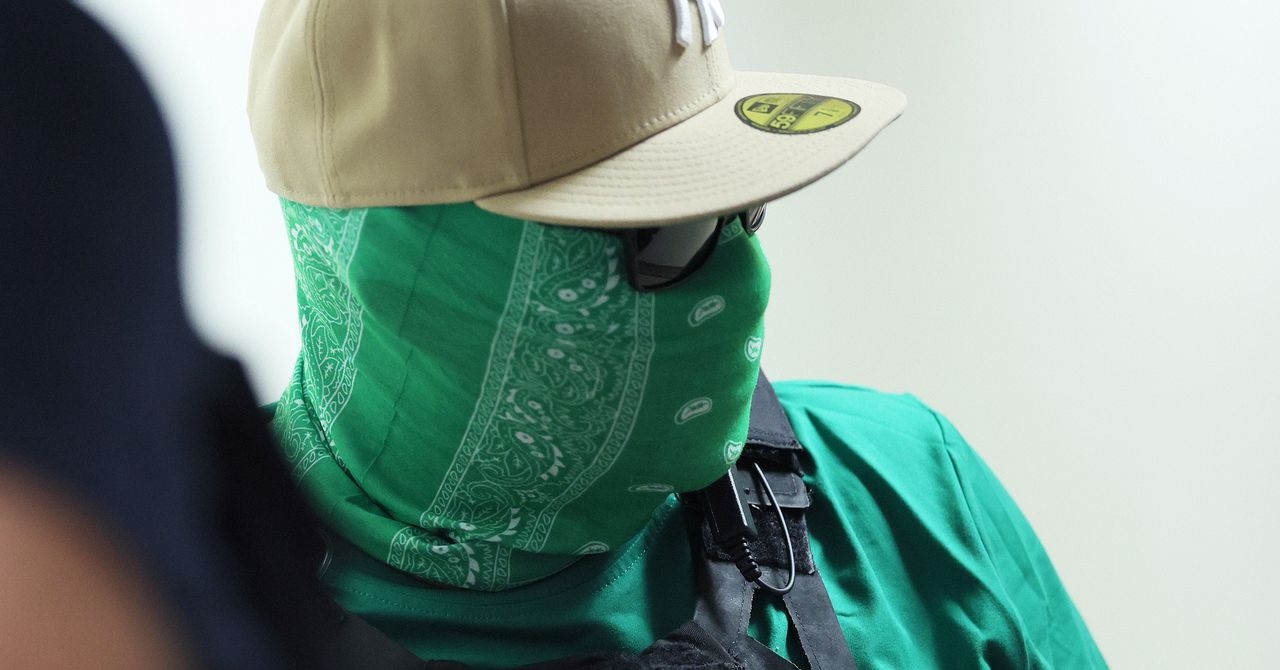FBI Warns of Criminals Posing as ICE, Urges Agents to ID Themselves

Criminals posing as US immigration officers have carried out robberies, kidnappings, and sexual assaults in several states, warns a law enforcement bulletin issued last month by the Federal Bureau of Investigation. The bureau urges agencies to ensure officers clearly identify themselves and to cooperate when civilians ask to verify an officer’s identity—including by allowing calls to a local police precinct. “Ensure law enforcement personnel adequality [sic] identify themselves during operations and cooperate with individuals who request further verification,” it says.
First reported by WIRED, the bulletin cites five 2025 incidents involving fake immigration officers and says criminals are using Immigration and Custom Enforcement’s heightened profile to target vulnerable communities, making it harder for Americans to distinguish between lawful officers and imposters while eroding trust in law enforcement. A review of public reporting confirms four of the five cases described in the bulletin. One appears to have gone unreported, suggesting the FBI drew in part on internal law enforcement information. The document was first obtained by the transparency nonprofit Property of the People.
On August 7, according to the FBI, three men in black vests entered a New York restaurant claiming to be ICE agents. Inside, they tied a worker’s hands and pulled a garbage bag over the person’s head. Another, believing the burglars’ story, surrendered themselves, only to be kicked to the ground and tied up as the intruders robbed an ATM.
The bureau’s advisory urges agencies at every level of government to coordinate to “verify legitimate versus non-legitimate operations” attributed to ICE—a call that frames the wave of impersonations as a national law-enforcement concern.
The FBI declined to comment. Its national press office said that it could only respond to media inquiries involving national security, violations of federal law, or essential public safety functions during the government shutdown.
Cases cited by its advisory span kidnappings, street crime, and sexual violence: In Bay County, Florida, the advisory says, a woman “unzipped [her] jacket and revealed a shirt that said ICE” and told her ex-boyfriend’s wife she was there to “pick her up,” before driving her to an apartment complex. The woman later escaped. In Brooklyn, it alleges, a man told a woman he was an immigration officer and “directed [her] to a nearby stairwell,” where he punched her, tried to rape her, and stole her phone before police caught him. In Raleigh, North Carolina, it claims, a man “entered [a] motel room and threatened to deport the woman if she did not have sex with him,” telling her he was a sworn officer. He showed her a business card with a badge, police said.
The FBI describes a few signs of impersonation: forged or mismatched credentials, outdated protective gear, and cloned vehicle markings. It’s urging agencies to launch outreach programs aimed at identifying fake ICE agents, a step the FBI argues could counteract the mistrust caused by impersonators and strengthen law enforcement’s image.
A senior ICE official tells WIRED: “Anyone caught impersonating themselves as a federal immigration agent will be prosecuted to the fullest extent of the law. Impersonating a federal immigration officer endangers public safety and erodes trust in law enforcement.”
Federal rules require immigration officers to identify themselves and state the reason for an arrest “as soon as it is practical and safe to do so.” The standard has not changed since it was codified in the 1990s, yet advocates say it is increasingly ignored. “The recent increased presence of armed, masked federal officers completely disrupts and erodes public trust in law enforcement,” says Alycia Castillo of the Texas Civil Rights Project. “Further, the increase in local cooperation with federal authorities through 287(g) agreements has led to a chilling effect on local law enforcement for communities,” she says, referring to a program that deputizes local police to act as immigration agents.
“When masked federal agents conceal their identity and authority as a practice, anyone can don a mask and a gun and not be expected or required to verify their authority,” she adds.
The growing use of such unmarked officers has raised questions for months about accountability and transparency in federal policing. However, the Trump administration frames ICE mask use as an officer-safety measure best left to the discretion of field leaders. At a recent press briefing, Department of Homeland Security secretary Kristi Noem said, “They wear masks at times to protect their identities from dangerous situations. The leadership teams, we leave that up to them to discern what's necessary.”
DHS has argued that agents still identify themselves while masked: “When our heroic law enforcement officers conduct operations, they clearly identify themselves as law enforcement while wearing masks to protect themselves from being targeted by highly sophisticated gangs like Tren de Aragua and MS-13, criminal rings, murderers, and rapists,” assistant secretary Tricia McLaughlin said in a September statement. ICE acting director Todd Lyons echoed the safety rationale, telling Face the Nation this summer that while he’s “not a proponent of masks,” he would allow them “if that’s a tool that the men and women of ICE [choose] to use to protect themselves and their families.”
Critics say the policy blurs the line between lawful arrest and military-style force. They argue that officers who hide their faces and affiliation weaken public confidence and make it harder to tell a legitimate operation from a violent crime.
“Perceptions of police legitimacy are absolutely undermined when law enforcement is carried out by masked officers. But importantly, so is public safety,” says Barry Friedman, faculty director of the Policing Project at NYU School of Law. “Perceptions of legitimacy and public safety both require that community members trust the agencies tasked with protecting them. That's all but impossible when officers are deliberately concealing their identities from the public.”
The FBI advisory, prepared by the Office of Partner Engagement and the New York Field Office, echoes those concerns, saying the rise in impersonation crimes linked to the "recent increase in ICE enforcement actions" is further eroding trust between communities and police. In Boston, police intelligence analysts voiced the same worry nearly a year ago, as the country braced for a change in power and a return to mass-deportation politics.
The Boston Regional Intelligence Center (BRIC) issued a public advisory last December, which WIRED obtained via public record request, warning of a “potential increase in scams” related to news about the “mass deportations from the incoming administration.” The notice references an incident from Trump’s first term in which four men in ICE apparel reportedly robbed a man on the street in Queens, demanding he pay money to avoid arrest. “Scammers know the immigration process is complicated and will use confusion along with fear to take advantage of victims,” a copy of the bulletin says. BRIC did not respond for comment.
In September, according to documents obtained via public record request, the Boston Police Department issued two additional advisories about scams targeting older adults. They warned that some scammers have impersonated ICE officers and other federal authorities, falsely telling people that they were facing “deportation actions,” seemingly as part of attempts to extort them for money. The Boston Police Department did not respond for comment.
The FBI says ICE’s “enhanced public profile,” and the media coverage around it, offers criminals the perfect pretext to prey on vulnerable communities. Legal experts say that images of militarized, masked enforcement are not just being copied by criminals but encouraged by policy itself. Jeramie Scott, senior counsel at the civil-liberties nonprofit Electronic Privacy Information Center, says the current administration’s actions have worsened the problem, weakening public confidence and inviting impersonators to borrow its authority.
“The Department of Homeland Security’s supposed campaign against only the ‘worst of the worst’ while upstanding community members are detained or deported and people are targeted for First Amendment-protected activities undermines legitimacy. Wearing masks and snatching people off the street undermines legitimacy,” Scott says. “It creates the expectation of federal officers that will aggressively treat anyone as a target and, as a result, creates the conditions for impersonators to leverage this expectation to commit crimes.”
Federal officers must be prepared to prove who they are, he adds, and accept that public skepticism is a reasonable response, not a threat.
The Boston advisory warned of other schemes preying on immigrants, from fake “visa lotteries” and sham legal services to fraudulent websites harvesting personal data. Some scammers specifically target refugees with offers of “special grant funds” that require bank information. Immigrant rights advocates say the scams thrive partly because of official behavior.
“For decades, agencies like ICE and CBP have evaded meaningful oversight and operated with a culture of secrecy and abuse under both Republican and Democratic leadership,” says Jeff Migliozzi of Freedom for Immigrants, an advocacy group. “The increased prevalence of masked agents only compounds this culture of impunity. Impersonations of federal officers are a problem, yes—but the root of this issue is that these agencies have deservedly lost the public’s trust in the first place.”
News reports of ICE agents frightening and threatening US residents are widespread and occur almost daily. In Waltham, Massachusetts, video shows federal agents detaining an adult and leaving a 13-year-old boy standing alone on a city sidewalk; neighborhood volunteers and local officials later helped get him home. In nearby Chelsea the same week, agents smashed an SUV window and dragged a man to the pavement in front of his family after church on Mother’s Day. In Oregon in October, footage on local news showed masked agents breaking down a bedroom door during a Gresham apartment raid, weapons drawn as a baby cries in the background. Then, on Monday, ICE agents in Ontario, California, shot a US citizen from behind during a traffic stop—their second Southern California shooting in a week.
“It’s rich that the FBI thinks ICE has a PR problem in immigrant communities because of impersonators, while masked and militarized ICE agents are waging a daily campaign of terror against those very communities,” says Ryan Shapiro, executive director at Property of the People.
In California, lawmakers have moved to curb the practice of agents concealing their identities directly. In September, Governor Gavin Newsom signed SB 627, the so-called No Secret Police Act, which bans what the bill’s author calls “extreme masking” during arrests or the service of warrants outside high-risk or undercover situations. Supporters said the measure was prompted by public confusion over masked immigration raids and unmarked federal teams deployed in prior years. Faiza Patel, codirector of the Liberty and National Security Program at the Brennan Center for Justice, says the California measure addresses a basic matter of public trust: “When a person being arrested cannot clearly identify a person as a law-enforcement officer, they may fear they are being kidnapped and resist.”
Seattle is now weighing a similar ban on face coverings. Late last month, Mayor Bruce Harrell introduced an ordinance prohibiting masks and requiring visible agency emblems. Violators could face civil penalties of up to $5,000. The proposal likewise follows months of public concern over the appearance of masked agents.
One recent ICE impersonation incident took place in Fife, Washington, about 30 minutes outside Seattle. WIRED obtained records about the incident via a public records request. According to court documents, the incident culminated in the alleged perpetrator pleading not guilty to a second-degree criminal impersonation charge. The case remains ongoing.
According to a Fife police incident report, police were called to a Ukrainian grocery store on March 16. A store security guard reported that a patrol-style vehicle with a decal resembling the ICE emblem had sped into the parking lot while honking its horn. When he approached the vehicle, he said he saw an occupant filming him. In a written statement, which appears to have been provided by the same security guard, a witness says that the occupant filming them made them feel “extremely uncomfortable, unsafe, and threatened” at their workplace. Investigators later obtained a video of the vehicle, which appears to have been taken on a mobile phone, which shows a man dressed in clothes resembling an ICE officer conducting what looks like an arrest.
Police later learned that the vehicle’s decal read “S.U. Department of ICE Deliveries" where “U.S. Department of Homeland Security” appears on the ICE emblem. The occupant, they learned, was 27-year old aspiring YouTuber and TikTok creator Ilya Kukhar. Though his TikTok account appears to have been deleted, a screen recording from police shows Kukhar formerly had six followers. In a TikTok shown in the screen recording, Kukhar stands in front of the vehicle and says he plans to drive around and hand out bags of ice. The video abruptly transitions to a supercut of local news clips about a then-unidentified ICE impersonator. He posted a nearly identical version of the same video on YouTube with the tags “#prank” and “#gonewrong.”
In an Instagram DM, Kukhar told WIRED there was “no ongoing criminal case” and “no alleged impersonations” with proof of who the driver was or whether anyone had acted as an ICE agent, adding that this was the reason “it never got anywhere.” A court document obtained by WIRED says that the city agreed to dismiss the charges if Kukhar agreed to nine hours of community service or a $150 fine. That's on top of a mandatory 40 hours of community service, a letter of apology to the grocery store targeted by the stunt, and a promise to never return to the market's property.
Several days after the initial report, a local police officer and two agents with Homeland Security Investigations (HSI) interviewed Kukhar, who told investigators that he was filming a YouTube video and that things got “blown out of proportion like crazy,” according to body camera footage reviewed by WIRED. When the Fife police officer notified Kukhar that he was being recorded, he responded, "It's all allegedly." He went on to repeatedly interrupt the investigators and insist that they hedge questions with the word “allegedly.”
During his interview, Kukhar did not admit to owning the vehicle, though police records show they obtained proof that he had purchased the vehicle. Kukhar also would not say where the car was when asked, asserting that he didn’t “have” it. Kukhar also asked law enforcement multiple times what the legal “line” would be so that he could do some version of his video without breaking the law. “I would ask an attorney at this point, man,” the Fife police officer replied.
“Can you stop playing around, dude?” one of the HSI agents later asked, adding that he and his partner investigate things like drug smuggling, human trafficking, and child abuse.
Kukhar also declined to give his address when asked. Moments after the interview ended, the officers began pulling up his address. “He does know that we’ll get to his address, right?” one of the HSI agents asked his partner at the scene and the Fife police officer. The partner responded by saying that she’d never seen him so angry.
“He’s wasting my damn time,” he said.
Just before the body camera footage ends, the Fife police officer joked, “We had a nice little ‘alleged’ conversation.”
“Yeah,” one of the HSI agents said. “‘Allegedly’ doesn’t magically protect you.”
Updated at 3:20 pm ET, November 4, 2025: Added additional details about Kukhar's legal agreement following the ICE stunt.
wired





